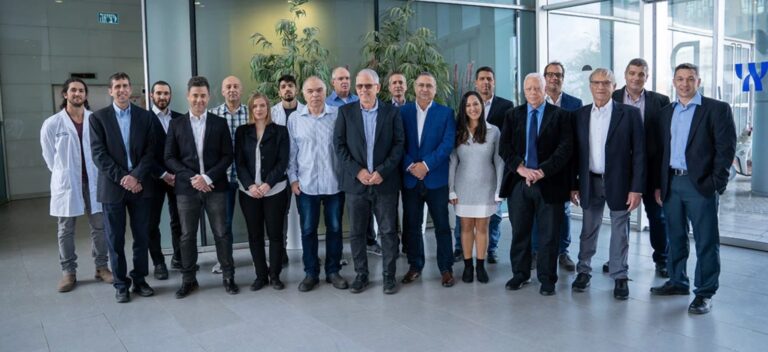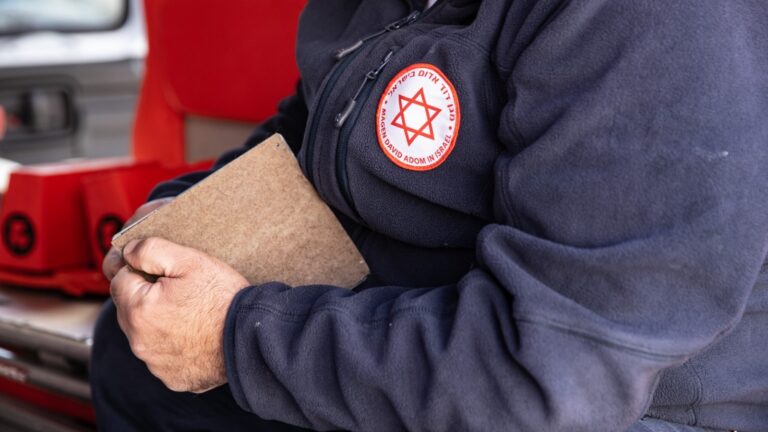Air purifiers were a popular purchase during the height of the Covid-19 pandemic, as people became increasingly concerned with viruses and other airborne pathogens.
At the recent CES show in Las Vegas, Israeli startup Airovation Technologies unveiled a new division, Airosphera, which will enable air purifier manufacturers to add artificial intelligence-based technology to make smarter indoor filters.
Airosphera’s algorithms use biosensing to monitor the heart rate, breathing and daily routine of people in an enclosed space.
The data, collected from up to one meter from the device, automatically modifies how the purifier works based on individual human parameters. A Bluetooth-connected mobile phone app can be used to change the settings manually.
Among those parameters is the amount of carbon dioxide in the room. An accumulation of CO2 (a natural byproduct of breathing) can impact cognitive performance, concentration and even quality of sleep.
Ever wonder why people in a meeting room or students in a classroom tend to get drowsy? Maybe it’s not just because the topic is boring!

Superoxide radicals
In nature, superoxide radicals neutralize viruses and bacteria and convert harmful gases into clean air. Airosphera’s parent company, Airovation, was founded by Marat Maayan to commercialize a technology developed by chemistry Prof. Yoel Sasson at the Hebrew University of Jerusalem to produce superoxide radicals in a lab.
For Airovation, the superoxide radicals in question are oxygen molecules containing an additional electron. Normally, oxygen has 12 electrons and is a very stable molecule. The additional electron makes it “radical,” meaning that it is no longer steady and seeks to bind with other molecules or to release that electron to other molecules.
In that sense, “the superoxide manages to stop CO2 pollution by converting it through a synthetic photosynthesis-like process into oxygen and fertilizers for new vegetation,” Maayan tells ISRAEL21c.
Superoxide radicals typically exist for just split seconds before they bind. That makes them difficult to work with.
Sasson’s methodology generates superoxide radicals in a liquid phase, so they last for “tens of minutes,” Maayan explains. “That creates the opportunity for us to work with it as a tool.”
Sasson and Maayan realized that if superoxide radicals were applied to the toxic smoke and exhaust emitted during industrial operations, they would bind to the excess carbon and remove it from the air.
Chemistry in the backyard

“I was in the army for 27 years as a commander,” Maayan says. “So, I know how to build a team and how to blow things up. I said to Yoel [Sasson], bring your chemistry to my backyard.”
Maayan and Sasson experimented by burning some IKEA chairs. The results were promising enough that Maayan was able to raise money from the Israeli Innovation Authority and some seed investors.
Maayan next took the superoxide radical technology to the UL Labs in Chicago. “We did full-scale live tests and managed to show this very technical milestone. They pump smoke into a room and on the other side, we deliver breathable air.”
That was in 2017. Airovation today is working in industrial facilities to convert smokestack exhaust into clear air. That wasn’t the company’s “first mission,” though, to use an army metaphor.
“Our goal was to convert elevators to become the main evacuation routes in a fire,” he says.
Elevators aren’t generally used in such situations since locking people in a small box that could fill with smoke could be a death trap. With an Airovation filter, suddenly it’s the stairs that look a lot riskier.
However, the concept was not embraced by either elevator stakeholders or by other types of factories.
“For years, no one cared much about CO2 coming out of a chimney,” Maayan says. “People looked at us like we were tree huggers.”
A device and an ecosystem
Two and a half years ago, attitudes started to change, Maayan notes. By that time, the company had already started looking at the wellness space, positioning the product as an enhancement to indoor air purifiers. (Maayan prefers to call them “air reformers” since they “reform the air to the right concentration around you.”)

Three years of working with a leading consumer brand in South Korea helped Airovation’s new Airosphera division grow “from a core technology to a device and an ecosystem” that can be used by third-party manufacturers, Maayan notes.
The combined companies – Airovation and Airosphera – employ 35 in Ness Ziona, four in Romania and one in South Korea, and have raised a total of $19 million.

In addition to the Koreans, where Kolon Industries is interested in working with Airovation to capture carbon at Kolon’s manufacturing facility, “there is growing interest from a number of Japanese companies led by Toyota,” Maayan explains.
Maayan tells ISRAEL21c that the first “Airosphera-inside” products should hit the market by the end of 2024. Airovation is still in the pilot phase, but Maayan is aiming for commercialization in 2025.
Circular economy
“Carbon capture is a huge concern these days,” Maayan notes.
One of the benefits to the Airovation business is that the captured carbon can be turned into other products.
ISRAEL21c wrote in 2022 about how Phoenicia Glass, Israel’s only domestic glassmaker, is partnering with Airovation to turn carbon into the raw materials needed to make glass, bringing Phoenicia into the carbon-neutral “circular economy.”
The deal also means that Phoenicia won’t have to import as much, reducing the need to ship in materials over long distances, which contributes further to climate change.
Another transformation Airovation can handle: capturing the carbon emitted when making “blue hydrogen” from natural gas.
Maayan considers this an interim phase until “green hydrogen,” made from breaking water into its component parts – two hydrogen molecules and one oxygen molecule, so the only byproduct is pure oxygen – becomes the standard. That will take time, with even the most optimistic estimates not seeing green hydrogen production happening at scale before 2040.
Changing the environment
For visitors to CES, the smokestacks were far away, and the air purifiers were top-of-mind, especially for people who wake up from a night’s sleep feeling unrefreshed.
“During sleep, sometimes the CO2 level increases up to eight times more than it is outside,” Maayan says. “In this case, we wake up tired. Wearables that monitor biomarkers when you sleep are very popular these days. But we not only monitor but can change the environment around you. This is our uniqueness.”
While you’ll still have to wait at least a year before your air purifier can remove carbon from your bedroom, you can follow Airosphera’s progress here.
For general information on Airovation, click here.
















